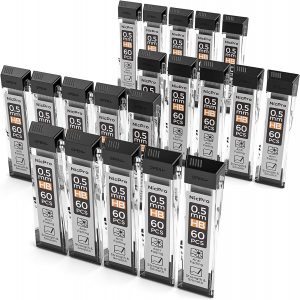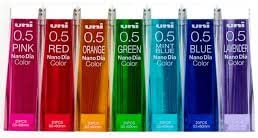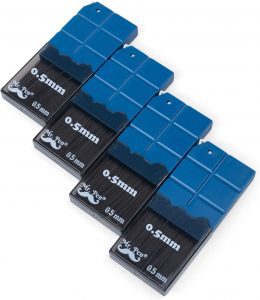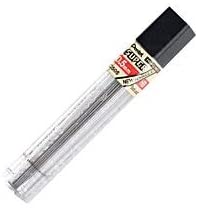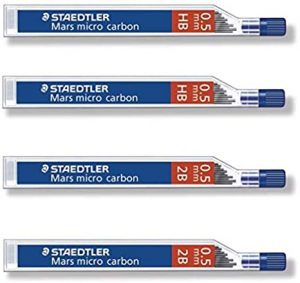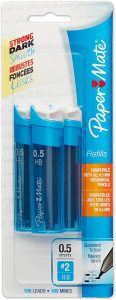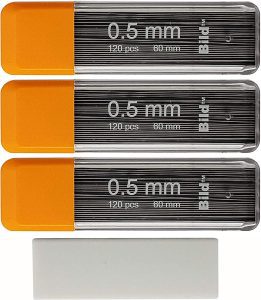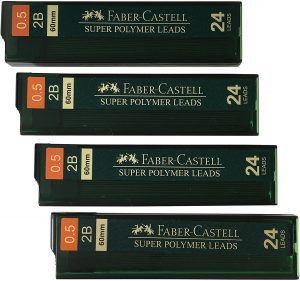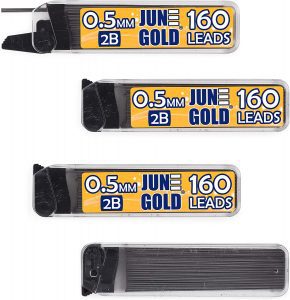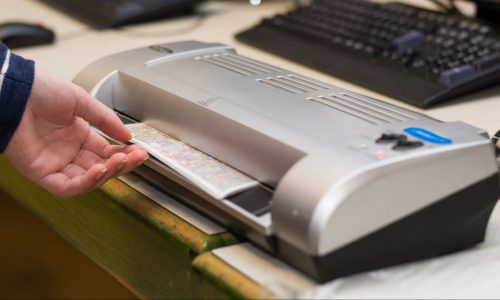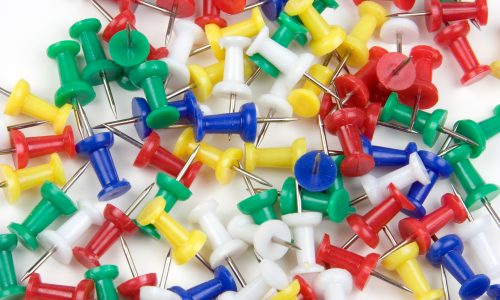The Best 0.5mm Pencil Lead
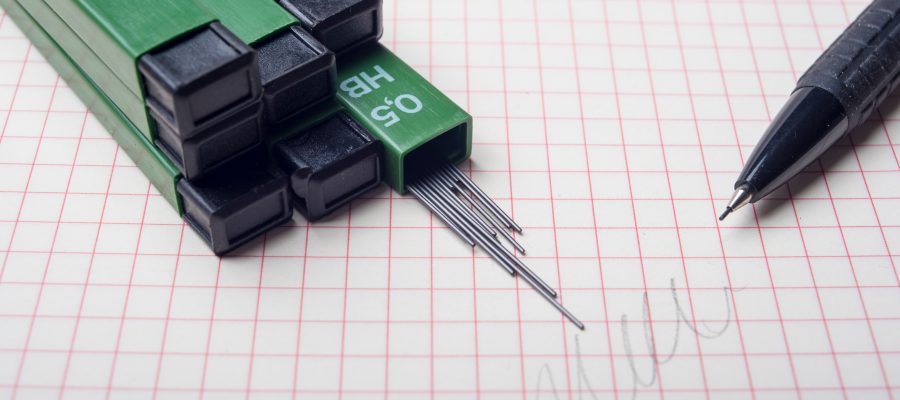
Our Review Process
Don't Waste Your Money is focused on helping you make the best purchasing decision. Our team of experts spends hundreds of hours analyzing, testing, and researching products so you don't have to. Learn more.
Our Picks For The Top 0.5mm Pencil Leads
- 1. Nicpro Bulk Anti-Fade 0.5mm Pencil Lead, 1200-Piece
- 2. Uni Graphite 0.5mm Pencil Lead, 140-Piece
- 3. Mr. Pen Flip Dispenser Case HB 0.5mm Pencil Lead, 600-Piece
- 4. Pentel Recycled Plastic Case HB 0.5mm Pencil Lead, 144-Piece
- 5. STAEDTLER Mars Micro Black Latex-Free 0.5mm Pencil Lead, 48-Piece
- 6. Paper Mate Bold Point HB 0.5mm Pencil Lead, 105-Piece
- 7. Bild Eraser & 2B 0.5mm Pencil Lead, 360-Piece
- 8. Faber-Castell Super Polymer 2B 0.5mm Pencil Lead, 96-Piece
- 9. June Gold Smooth Mechanical 0.5mm Pencil Lead, 640-Piece
Stock up your classroom or office supply closet with this 0.5mm pencil lead set. The set includes an astounding 1,200 pieces, each of which is strong and break-resistant. The lead also goes on the page nice and smooth, keeping your documents legible.
Best for Clasrooms and OfficesThese 0.5mm pencil lead refills fit all 0.5mm mechanical pencils.
With this 0.5mm pencil lead set, you'll receive 140 lead refills. Those refills are broken up into seven different colors, allowing for writing, sketching and coloring a variety of projects. Simple slide your preferred color down into a 0.5mm mechanical pencil and you're ready to go.
For Teens and AdultsThese colored 0.5mm pencil lead pieces produce bright colors, but are also erasable if you make a mistake.
This set of 600 mechanical 0.5mm pencil lead refills works with standard pencils made for this size. The high-quality lead is equivalent to #2 pencils, making them just right for everyday drawing and writing. These refills come in packages of 50 each.
Getting to the PointWith this refill, you'll have more than enough to keep you going for a long, long time.
This high-quality HB hi-polymer 0.5mm pencil lead refills come in a pack of 144 for just the right price. This lead is equivalent to #2 pencils, resists breaking and is packaged in 100% recyclable, convenient plastic tubes.
A Respected Brand NamePentel has an outstanding reputation for quality writing implements and supplies, and these well-made refills don't disappoint.
Buying Guide
Mechanical pencils use slim, long pieces of graphite lead that you can replace once you use them up. To put one in, you usually unscrew the top part of the pencil and insert a fresh piece in the cartridge if it has one; otherwise, you’ll drop the in the lead in another way.
Screw the top back on, and apply pressure to the pencil’s button or other mechanisms (some of them twist) to advance the lead down to the tip. If you’re replacing an old refill, first turn the pencil upside down after you open it up and tap gently to get the debris out.
If you’re worried about lead in pencils, there is absolutely no reason for concern. The name is deceptive, because pencil “lead” is not made of the real thing. It is actually made from a form of carbon called graphite. This graphite has clay mixed into it to form the pencil lead with which we’re all familiar.
People prefer mechanical pencils over regular ones because they never have to be sharpened, offer consistent balance and line width, and come in different densities. The pencils are also sold in various styles and materials and look and feel more professional; look for ones with built-in erasers, which may often also be refilled.
As for the graphite refills, you’ll want to understand the different sizes that they are sold in. Lead sizes refer to the diameter measured in millimeters (mm). The smaller the number, the thinner the lead. Smaller diameters work well for fine details and tiny writing but break easily. 0.5 and 0.7 millimeter leads are the most common ones; they’re still precise but more durable than thinner leads.
The standard size is 0.5mm, which is used almost universally in technical drawings. These produce fine, narrow lines, so artists like using them to create details. Some people prefer an 0.7 lead for shading and non-detailed work, though. Because 0.5 lead is so common, you will have plenty of selection in styles of mechanical pencils.
As with other pencils, mechanical pencil leads may have a lead grade, represented by letters “H” and “B.” H is harder and lighter while B is softer and darker; HB2 is right in the middle of this scale.
What to Look For
- Some pencil lead refills are only compatible with specific mechanical pencils, so read the product descriptions carefully.
- If you like using different kinds of refills, shop for sets that include ones with different lead grades.
- Mechanical pencils usually only take one size of lead refills, so if you’re using a standard pencil, it’ll only work with 0.5mm refills.
More to Explore
The first graphite pencils from the 1500s featured lumps of the material wrapped in cloth or string that may have been called “lead holders,” required because graphite was so soft. However, pencils generally owe a debt to styluses from ancient Rome. Today, mechanical pencils are sometimes referred to as clutch pencils, propelling pencils (especially in the U.K.) and automatic pencils.
Then in 1822, British inventors Sampson Mordan and Isaac Hawkins patented a lead pencil that required no sharpening: each time you used it, the lead moved forward. These pencils were continually improved, with more than 160 patents filed through 1874. Additional improvements, like a spring-loaded version and twist-feed mechanisms, continued being created after that.
In 1915, Hayakawa Tokuji of Japan devised the more practical “Ever-Ready Sharp” pencil that featured a metal housing. This organization later evolved into the Sharp electronics company, which still operates today.

